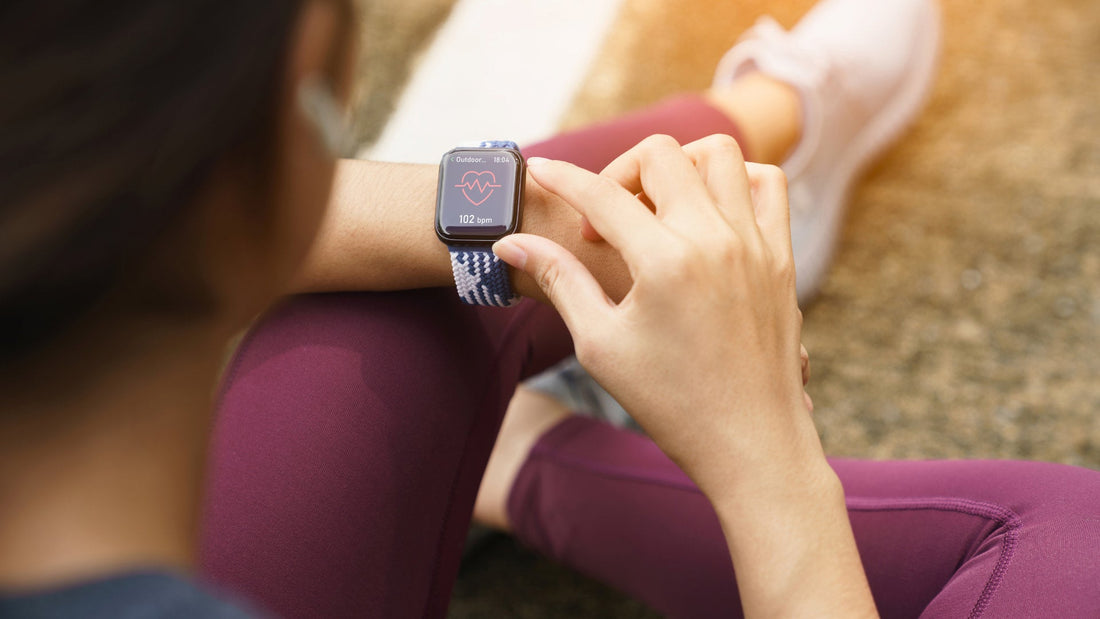The horn blares and you blast off from the starting line. Feeling great, you pass by a bunch of runners in the first two miles of your half-marathon.
But by mile seven, most of the runners you passed earlier in the race are now passing you. What happened?
Whether you’re running a 5K or a half-marathon, your running pace matters. Without a proper marathon pacing strategy, it’s all too easy to burn out quickly at the start of a race and sabotage your chances at setting a new PR.
To avoid a repeat of this mistake, here are a few tips to help you find and calculate your perfect running pace for your next race:
Calculate Your Baseline Running Pace
Whether your goal is to set a new PR for your next 10K or to cross the finish line of your first half-marathon, you need to know what your baseline running pace is. This is the first step to help you measure your progress and set the optimal pace for your next race.
- An easy way to find your baseline pace for long distance runs is by entering a 5K race. To be as accurate as possible, try to choose a race with an even surface and with similar conditions to what you usually train in.
- Be sure to track the pace time of your last mile. This will be your baseline running pace. If you’re training for a 5K race, you can find your baseline pace by timing yourself for one mile and use this as your baseline.
Project Your Pace for Longer Distances
Now that you have a baseline pace, it’s time to calculate a reasonable running pace for your next race. There are a few different methods you can use to predict your pace for a long-distance race.
-
 The first is by punching your baseline pace into an online pace calculator. Many online pace calculators are based on the fact that runners slow their pace at longer distances. Other running pace calculators can calculate your training paces for all different types of runs.
The first is by punching your baseline pace into an online pace calculator. Many online pace calculators are based on the fact that runners slow their pace at longer distances. Other running pace calculators can calculate your training paces for all different types of runs. - The second way to calculate your running pace for long distances is to simply add 20-30 seconds onto your 5K pace time to find your 10K pace, and another 20-30 seconds for your half-marathon pace. For example, if your baseline pace for a 5K race was 8:30 per mile, your 10K pace would be 8:50 and your half-marathon pace would be 9:10.
- Keep in mind that these numbers aren’t set in stone. If you need to tack on another 10 or 20 seconds to your 10K or half-marathon, then don’t feel guilty for doing so! While you can’t go too slow, going too fast can lead to injury.
Start Slow
The key to finishing your race strong is to run the second half of your race faster than the first. This pacing strategy is known as running negative splits and it’s the most common pacing strategy among elite distance runners.
The theory goes that starting out slow gives your body time to warm up, allowing your muscles and joints to function at peak performance in the second half of the race. We know this strategy works not only from anecdotal evidence from countless runners, but also from studying the pacing patterns of elite distance runners.
For your next half-marathon, start out at a pace which is two or three minutes slower than your goal pace. Then, work your way up to your goal pace during the middle portion and kick things into high gear towards the end of the race.
Learn Your Pace by Feel
In a world of high-tech fitness trackers, it’s easy to become reliant on technology to tell us how to calculate our running pace. Even seasoned runners are guilty of not having a good sense of their own speed.
- Learning how to accurately estimate a good running pace without the help of a device can significantly benefit your race performance. Although GPS watches are great for training, they likely won’t match the race distance because of the scientific method used to measure a course.
- Another important reason to learn how to pace by feel is that it gets you into the habit of listening to your body. When a surprise heat wave or windy conditions slow you down on race day, you can learn to set a pace which feels right rather than fight to maintain your goal pace.
- To learn your pace by feel, start training at different paces. Use your GPS watch to check your pace, then consider how your body feels at that pace.
Setting the right pace involves a perfect balance between paying strict attention to your pace and going by how you feel. Sound complicated? Don’t worry—you’ll learn to trust the process when you calculate a race pace that works for you. Before your next competition, be sure to grab our Classic FlipBelt to hold all of your items!




